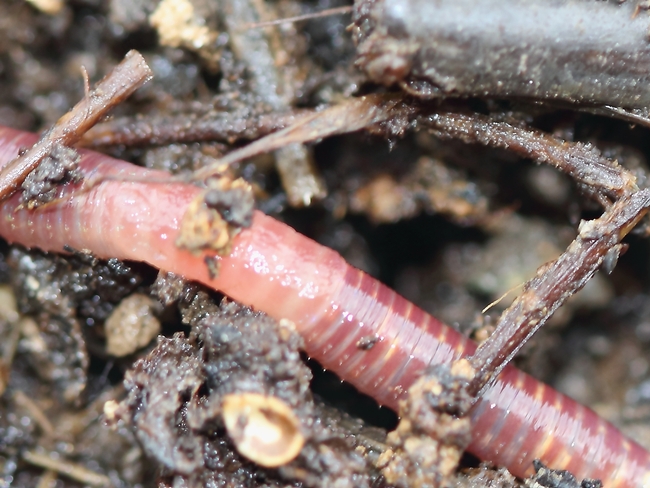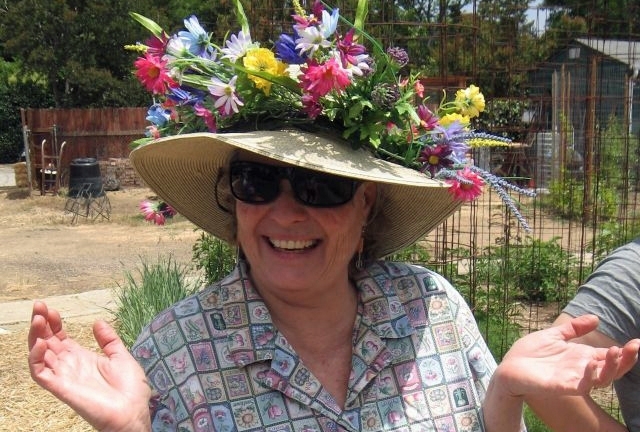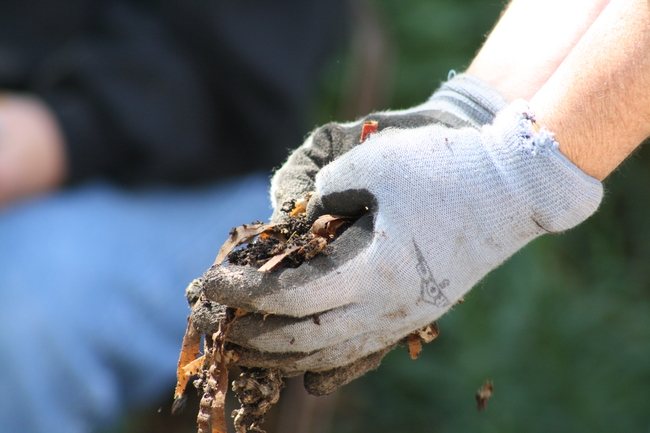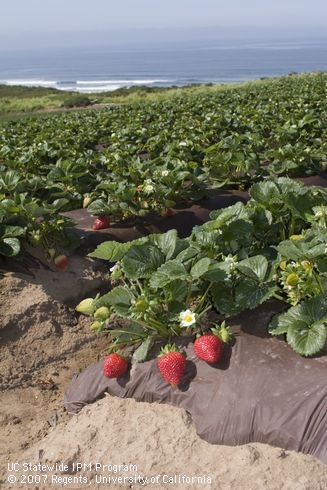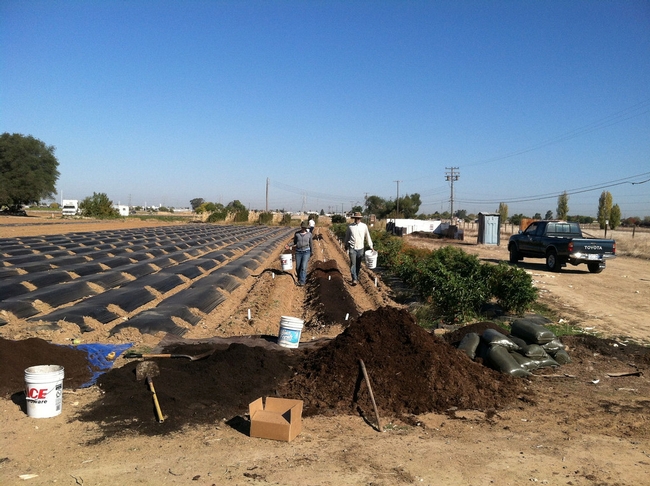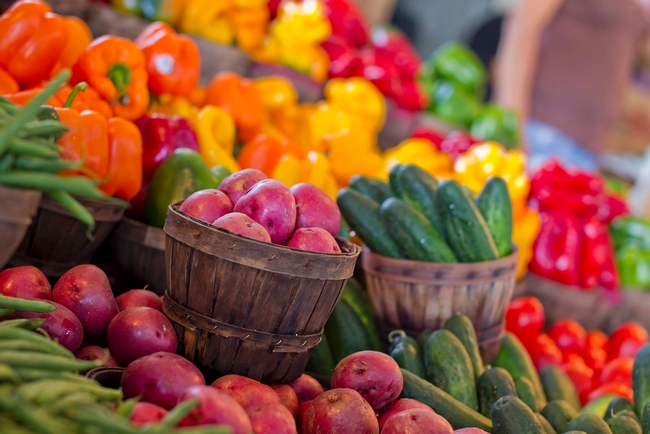Posts Tagged: compost
Turn food and garden waste into rich fertilizer with worms
UC Master Gardeners in Stanislaus County presented an all-natural, sustainable solution to disposing garden and food waste during a session for the community on worm composting, reported John Holland in the Modesto Bee.
All it takes is an 18-inch deep bin, equipped for drainage, and a supply of red worms. Provide the worms a substrate that contains a mix of high carbon materials - like shredded paper, dry leaves or sawdust - and kitchen scraps - such as fruit and vegetable cores and peels, leftover grains and coffee grounds. A few months later, the worms will have transformed the contents into a rich organic fertilizer ready to be applied to garden plants.
"It's a great fertilizer," said UC Master Gardener Dennis Lee. "It's very inexpensive for you to produce. You can do it indoors. There's very little odor - actually, no odor.
Learn more:
Orange County UC Master Gardeners created a video series on worm composting
Vermicomposting - Composting with Worms, from San Joaquin County Master Gardeners
Build the soil for successful gardening
Before digging in to spring planting, pay attention to building the soil, advises an article in the Los Angeles Times by Jeanette Marantos.
Marantos visited the Pasadena backyard garden of Yvonne Savio, the retired coordinator of the UC Master Gardener Program in Los Angeles County. Savio is the creator of the Gardening in LA blog, with new stories appearing "every other week or so."
“The old saying is, ‘Feed the soil, not the plant,'" Savio said. “When you just use chemical fertilizers, you're not establishing a long-lasting base of nutrition for the plant. It's just giving it a huge piece of cake on Sunday, and then by Thursday it's nutritionally starving.”
Savio recommends a steady diet of organic matter be spaded into soil, and a layer of organic mulch added to the top of soil.
When you continually add organic amendments to the soil, the dirt comes alive as the amendments decompose, creating the beneficial bacteria, fungi and the nutrients plants need to grow strong and healthy, Savio said. “It's really like a cafeteria where your plants can pick and choose what they really like.”
Use compost for water conservation
“Adding compost to your soil on a regular basis increases the amount of water your soil can hold, therefore decreasing the amount of times you need to apply water to your landscape,” says Missy Gable, the director of the UC Master Gardener program, in the final installment of a six-part video series on water conservation in the home landscape.
Compost is organic matter – grass clippings, fallen leaves, spent bedding plants, vegetable peels, coffee grounds, etc. – that has been dampened and turned regularly so it is broken down by worms and micro-organisms. The finished compost, a dark black blend with a pleasant earthy smell, can be mixed into the native soil in the landscape.
Compost improves the soil texture, holds moisture, provides food for beneficial bacteria, and nutrients for plants.
View the video below:
Detailed information about the benefits of compost and instructions for home composting can be found in Composting is Good for Your Garden and the Environment, a UC ANR publication available for free download from the UC ANR publications catalog.
Additional videos in the UC ANR series on saving water in the landscape.
Early-morning watering is best
Remove weeds from your landscape
The videos are also available on the UC ANR YouTube channel.
An initiative to improve California water quality, quantity and security is part of the UC Division of Agriculture and Natural Resources Strategic Vision 2025.
Can compost be an alternative to methyl bromide?
Writing on Earth Day, I am reminded of one of the world's major successes in environmental protection, the Montreal Protocol. Originally signed in 1987, it works to phase out ozone-depleting substanc
es, including the soil fumigant methyl bromide, commonly used by strawberry growers.Twenty-seven years later, the realities of enacting the Montreal Protocol are still taking shape, and strawberry growers are, with each harvest year, a step closer to a complete phase out of the fumigant and increased restrictions on alternative chemical fumigants used for disease suppression.
UC research has focused on how to make an economically viable and effective transition away from the soil fumigant. Initial alternatives include replacement chemical fumigants as well as biological fumigants such as anaerobic soil disinfection (such as putting tarps over fields to decrease oxygen), mustard seed meal amendment, or steam disinfestation.
But what if a practice many growers already use could also serve to suppress soil-borne diseases? What if growers could use a substance that provides multiple on-farm benefits?
Many conventional and organic growers alike use compost to boost soil fertility and organic matter. But compost's potential to serve other purposes, including suppressing disease, remain largely unexplored.
Ph.D. student Margaret Lloyd and Tom Gordon, professor in the Department of Plant Pathology at UC Davis, are hoping to close the gap in that knowledge. With a grant from the National Strawberry Sustainability Initiative, a program administered by University of Arkansas and funded by Walmart Foundation, and funding from UC Sustainable Agriculture Research and Education Program, Lloyd's research seeks to understand whether compost can contribute to disease suppression on a commercial scale, and how growers can best incorporate compost into their farm management to see its benefits.
“Compost is part of the production system that has potential as biological control,” says Lloyd. “Historically, we've only focused on it as a source of organic matter or soil nutrients. I'm trying to characterize its role in root health and soil health.”
The study evaluates the root health of strawberry plants, and compares plant yield and disease suppression across a number of research sites and compost types.
“In general, we talk about compost just as compost,” Lloyd said. “But it has drastically different qualities — soil fertility characteristics, physical properties, and microbial profiles. By focusing on different compost sources, the study will help growers better assess their available compost options to m
eet their farm needs.” Composts used in the study include worm compost, manure-based compost, spent mushroom compost, and municipal yard trimmings compost.Alternatives to methyl bromide have been a long time coming. “The research suggests that it won't be one technology replacing another, but a package of tools to help growers manage disease suppression in the soil,” Lloyd said. If some of those tools are already in a grower's tool kit, the transition away from fumigants will be that much smoother.
The research suggests a powerful Earth Day message for me: use what you have, but seek a deeper understanding of just how to use it.
Lloyd's research findings will be completed in 2014, with results available for growers in 2015. Visit the project's website for more information.
What's in your compost?
For home gardeners, spring is a busy time of year and there’s never a tomato with more flavor than one grown to full ripeness on the vine. But there are also many safety precautions to follow to prevent contamination of fruits and vegetables with pathogens that cause serious food-borne illnesses.
Michele Jay-Russell, a veterinarian and research microbiologist at the Western Institute for Food Safety and Security (WIFSS) and program manager of the Western Center for Food Safety (WCFS), recently co-authored a study that highlights the need to be aware of the hazards associated with using raw animal manure to fertilize home gardens. (Read full article here.)
The basis for the study began in July of 2010 when a shire mare from a rural Northern California farm was brought to the William R. Pritchard Veterinary Medical Teaching Hospital for treatment of colic. Following protocol, the veterinarians on call screened the horse for Salmonella to avoid infecting other horses during hospitalization. She tested positive and after successful treatment for colic, went home. Her owners then notified the veterinarians that some of their other draft horses were sick as well — all 8 were tested and 6 came back positive for the same Salmonella Oranienburg strain, including the mare that still had the infection.
Jay-Russell heard about the case from her colleague John Madigan, professor of medicine and epidemiology at the school. The farm’s owners invited Jay-Russell and Madigan to the farm to see if they could uncover the source of the Salmonella infection. They sampled water from horse troughs, manure storage piles, wild turkey feces and soil from the family’s edible home garden where raw horse manure had been used as fertilizer. Each of those locations had a percentage of positive samples over the sampling period from August 2010 to March 2011.
“We showed the owners how to continue collecting samples and provided them with a FedEx number to ship them to UC Davis,” Jay-Russell said. “During that whole time, the garden soil kept coming back positive, which showed that this strain of Salmonella could persist for months.”
While the researchers couldn’t be completely certain about the original source of Salmonella on the farm, they suspect that a recent surge in the wild turkey population on the property introduced the bacteria to the horses by pooping in the horse corrals and in the water troughs. They speculated that the wild turkeys brought the Salmonella onto the property, although they couldn’t rule out the possibility that the birds were exposed on the farm or to other potential sources of Salmonella.
“What is clearer is that the raw horse manure applied as fertilizer was the most likely source of garden soil contamination,” Jay-Russell explained. “We suspect that the damp climate in Mendocino County may have contributed to the longevity of this bacterium in the soil long after the owners stopped applying the horse manure to the garden. Fortunately, the owners didn’t get sick, but our investigation showed the potential for widespread dissemination of Salmonella in a farm environment following equine infection.”
To promote safe gardening practices, Jay-Russell has teamed with Trevor Suslow, a Cooperative Extension food safety specialist in the Department of Plant Sciences, to speak to groups of small farmers around the state about best practices. They also use a brochure in English and Spanish, “Food Safety Tips for Your Edible Home Garden,” that includes information about safe uses of animal manure and ways to minimize animal fecal contamination.
“It’s good to let people know about the risks and to correct misinformation about ways to treat the compost pile before using it in the garden,” Jay-Russell said. “The biggest take home message from this experience is to be very careful about using manure from sick horses — and to be cautious about offers of free manure — you don’t know what’s in there. Commercial compost should be bought from a reputable source.”
She urges gardeners to take a class and learn how to compost correctly and safely. Each county in California has UC Cooperative Extension advisors and many have Master Gardener programs offering information on food safety.
Additional resources:

